

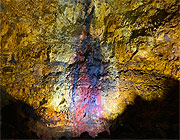
Reykjavik, though small, is pleasant to explore, and the Blue Lagoon is a popular attraction, but descending into the volcano Thrihnukagigur was an absolutely spectacular and unforgettable experience.
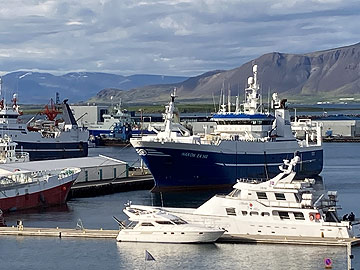
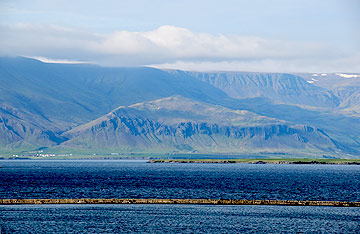
A very small capital city, very compact and easy to explore. Not surprising really as Iceland as a whole has a population of under 400,000.
We stayed in the Exeter, very central, and had been upgraded to the Harbour Suite which had a fabulous view over the harbour.
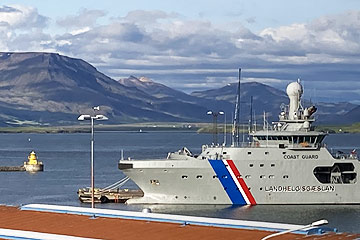
We stayed here for a couple of nights at the end of our holiday too, so were able to thoroughly explore the city. On the ground floor of the hotel the Deig Bakery sells great doughnuts and coffees. The crème brûlée doughnuts are fantastic but very filling, if it was possible to split them between two, one would have been enough for us.
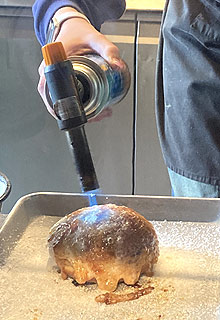
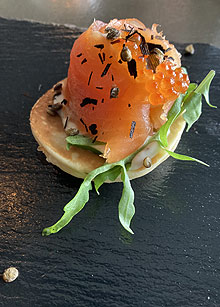
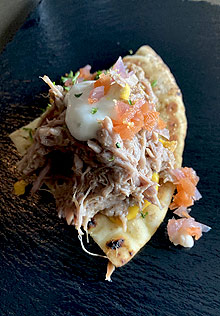
On our first day we did a food tour of Reykjavik, it's a good way to get to see a place with a local and taste the local dishes. Very helpfully our guide, Noki, sent a summary of all the food we'd had.
First up was Fjallkonan where we had excellent shredded slow cooked lamb shoulder on flat bread and lightly cured arctic char with salmon roe and elder flower dressing on chickpea blini.
Then Messinn, a superb fish restaurant where we were served the traditional Plokkfiskur (Mashed Cod) and another Arctic char dish with almonds, cherry tomatoes and lime served with very good rye bread and butter.
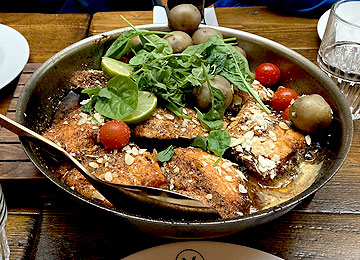
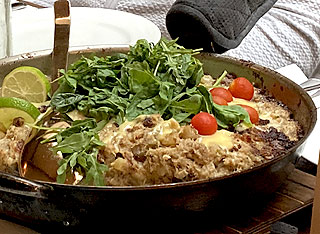
Next street food in the shape of a highly acclaimed lamb hot dog from a small stand in the city centre, Baejarins Beztu Pylsur.
It really was extremely good. I had it with everything including fantastic crispy onions and remoulade. There is always a long queue here for good reason!
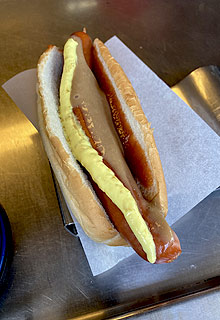
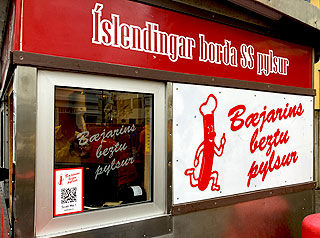
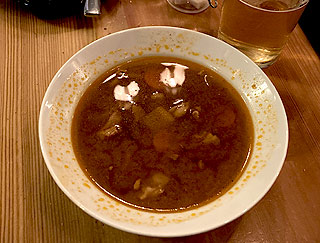
Traditional Icelandic meat soup was served at Íslenski Barinn which neither of us thought was very special, and the infamous fermented shark.
We had already had several warnings bout this, smelling and tasting vile, but we both tried it, and though the smell lived up to its reputation, the taste wasn't as bad as we expected even when chewed the recommended 12 times! Noki told us that the shark has no kidney so somehow all the waste is reabsorbed into the body which is poisonous. Icelanders seem to eat it as an act of bravado but not very much and not very often.
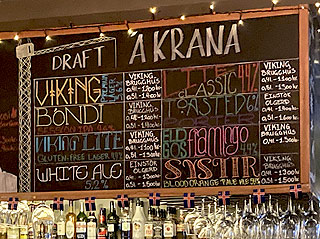
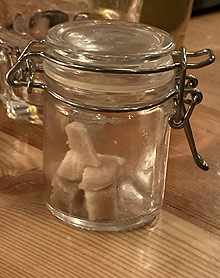
Finally to Café Loki where we had rye bread ice cream, kleina (an Icelandic doughnut) and coffee. I didn't like the ice cream at all, and, for me, the doughnut wasn't anything special either.
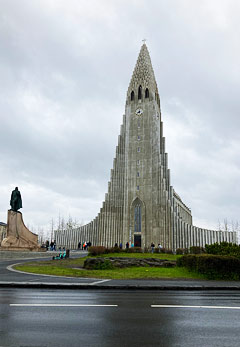
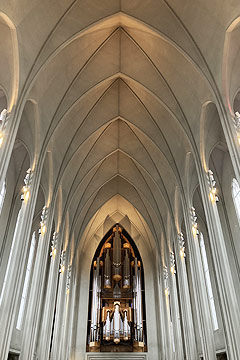
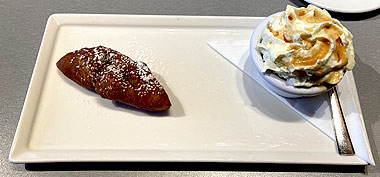
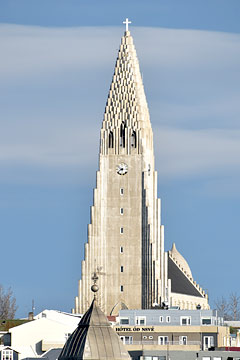
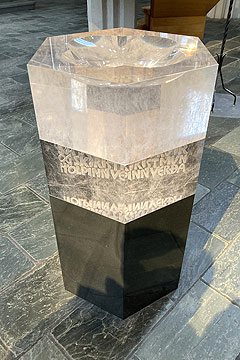
Café Loki is very close to the famous Lutheran church Hallsgrimskirkja. It's very austere, inside and out, but an interesting shape. It is designed to mimic the beautiful basalt rock formations that we were to see in several areas of Iceland. At 75 metres this is the tallest church in Iceland.
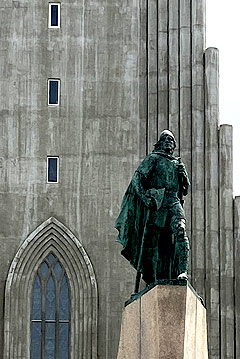
A statue in front of the church is of Leif Eiriksson, said to be the first European to reach North America, 500 years before Columbus. The statue was a gift to Iceland from the United States.
There is a great view of Hallsgrimskirkja from the terrace of Sky bar on the top floor of Center Hotels Arnarhvoll. Also of the waterfront near the Harpa concert hall with the mountains behind.
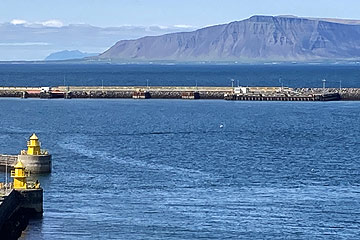
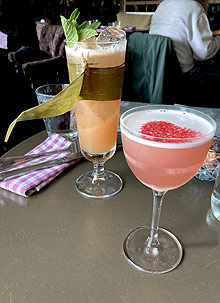
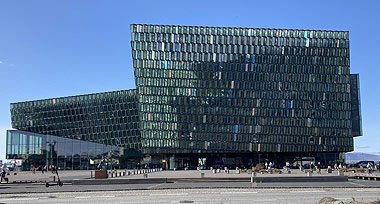
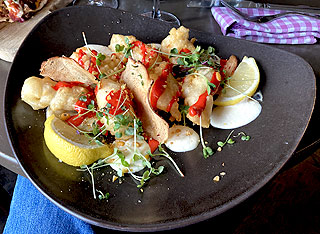
When we returned to Reykjavik we made sure to have another hot dog, really excellent.
We also returned to Fjallkonan and Messinn.
Fjallkonan was a severe disappointment. Though the cocktails and lamb flatbread were very good, my lobster tempura was terrible, really doughy with very little lobster.
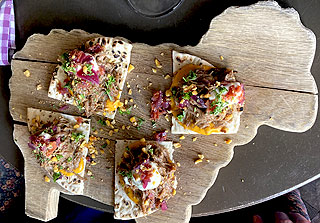
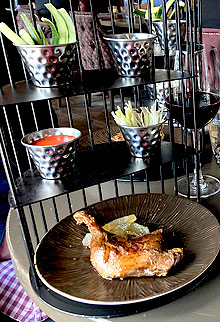
We then both had the duck confit which was also bad, served with cold pancakes, the small amount of duck was also cold. The table was tiny with not enough space for the plates and glasses. All in all, a very disappointing experience.
Fortunately our return visit to Messinn was superb, one of the best meals we had in Iceland.
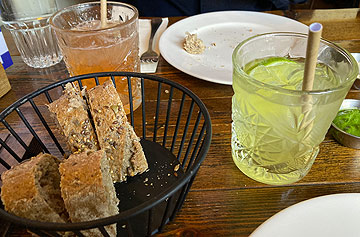
We both had fish pans: fillet of cod with chili curry, leek, apples, mango chutney, white wine, cream, cream cheese and parmesan; Atlantic wolf fish prepared with mushrooms, paprika, grapes, white wine, and cream.
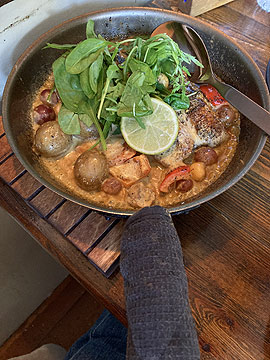
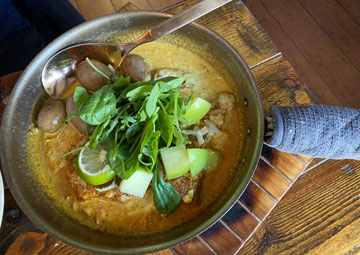
The fish pans are served in the pans that they are cooked in so it's all piping hot with lots of sauce.
Along with farming, fishing has always been the most important industry in Iceland, right from the first settlements in the 9th century. These days there are fewer independent fishermen as the massive fishing trawlers take over. We saw some of these in the old harbour, one in particular was an unbelievable size and there was at least one whaler.
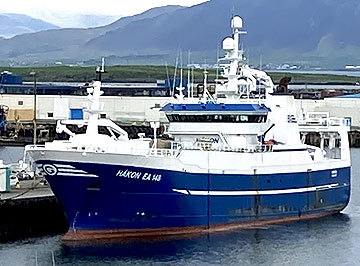
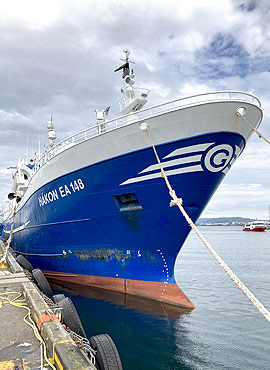
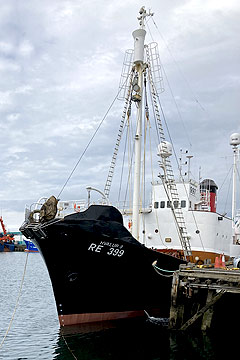
Icelanders have hunted whales for centuries, though hunting with harpoons from row boats bears little resemblance to the commercial operations of today. It is possible that whaling may be banned altogether in 2024.1
Iceland was settled relatively late in human history. At various times from the late 9th century Scandinavians landed or made temporary settlements on Iceland.
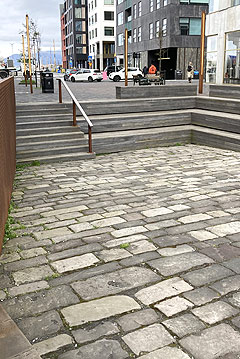
The first permanent settlement was established by Ingolfur Arnarson and his brother, according to legend. It was he who, it is said, gave Reykjavik its name - he saw the steam rising from thermal springs and thought it was smoke, hence "Smoky Bay" - Reykjavik.
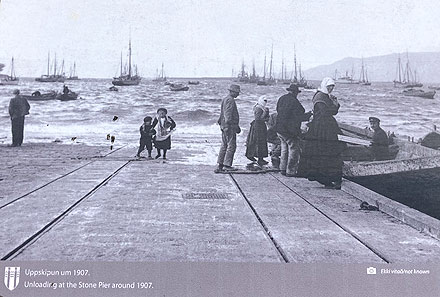
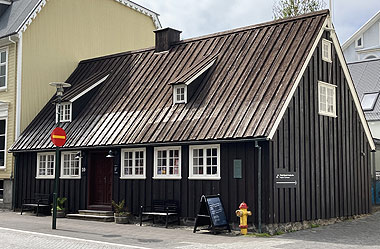
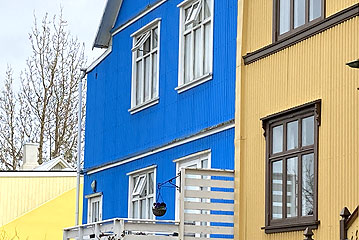
The oldest house in Reykjavik dates from centuries later, though. Built in 1762, Adalstraeti 10 is of timber construction and was one of only a few dwellings at this time.
Nearby is the best ice cream we found in Reykjavik at Gaeta, very pleased to see they had liquorice, which is supposedly very popular in Iceland.
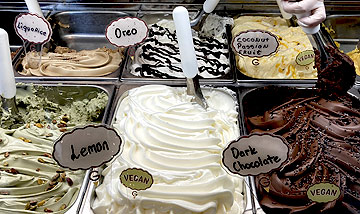
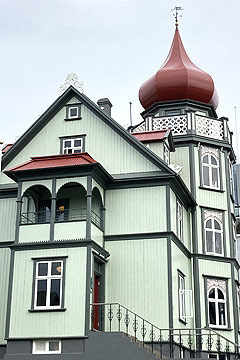
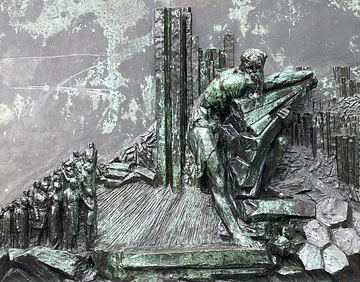
In 1397 the Kalmar Union united the countries of Norway, Sweden and Denmark under one king and Iceland came under Danish control. In 1918 Iceland became an independent state within Denmark, and 26 years later gained full independence.
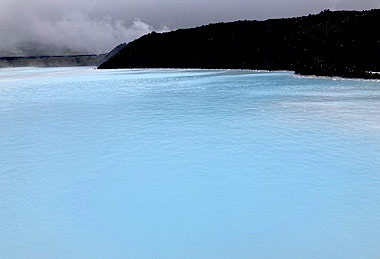
We arrived on a dull, drizzly afternoon, not unusual as Iceland has a very wet climate, though we were very lucky with the weather throughout our trip, having only two other days when it rained and much higher than average temperatures. The average high for June is around 11C but we had many days of temperatures in the twenties.
On the way into Reykjavik we stopped off at the Blue Lagoon. We didn't want to go into the water, just have a look of it. And on this chilly, overcast day it was very atmospheric, surrounded by jagged black lava, with steam rising from the blue water and plumes from the nearby power station behind.
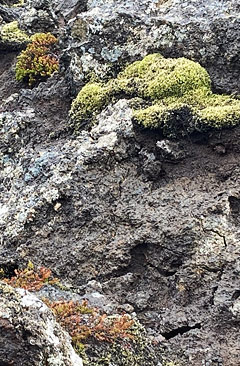
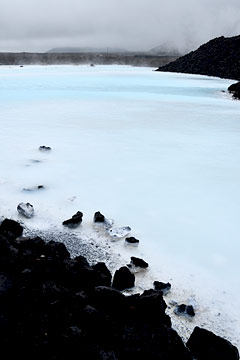
The lava is not totally devoid of life, there are abundant lichens which are among the first to begin colonising the habitat, followed by more diverse plants as a kind of soil builds up.
The milky white colour in the pools is due to high silica content of the mud, people in the pools rub the mud into their skin.
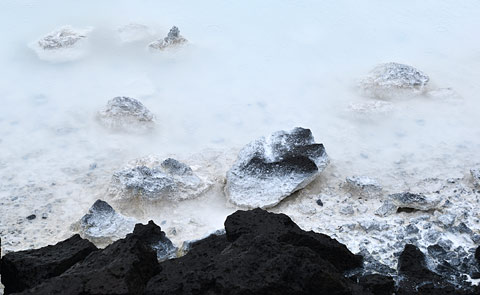
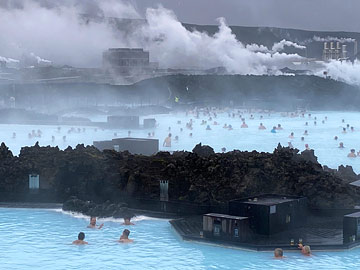
People were in the pools closest to the spa buildings but walking only a short distance away all the pools were occupied only by a few ducks - they must love the hot water which is around 40°C!
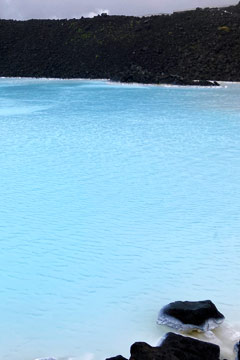
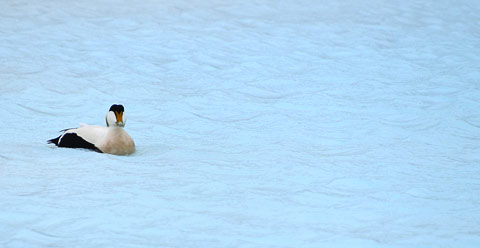
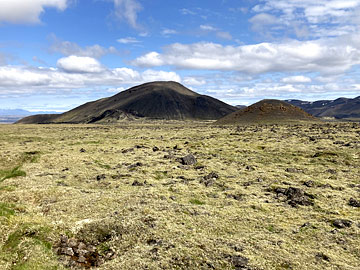
We went inside a volcano at the very end of our trip to Iceland and it was an incredible experience.

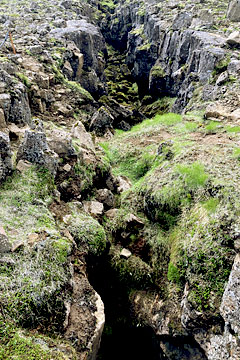
From the drop-off point on the lava fields there is a roughly 4km round trip to the volcano and back. The terrain is quite rough but it's a relatively easy hike for anyone of reasonable fitness, though there is a short, steep climb to the top of the volcano.
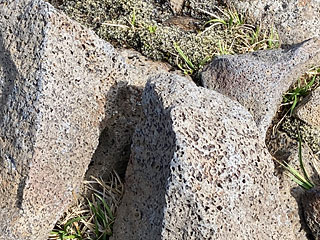
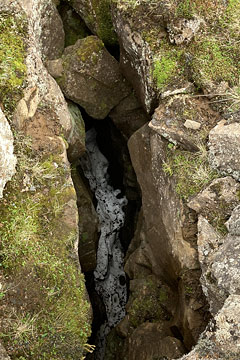
Our guide was very knowledgeable and explained how the region we were in was extremely volcanic. The reason for this is that the fault line where the Eurasian and North American plates are moving apart runs right through Icelnand and directly through this area, we actually crossed it! The landscape is littered with volcanic cones and subterranean lava caves.
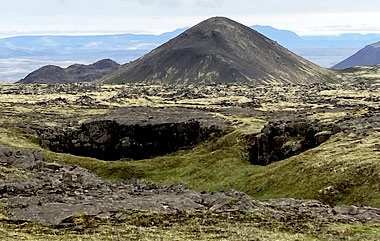
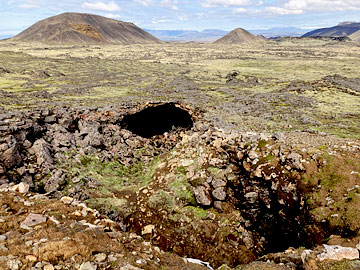
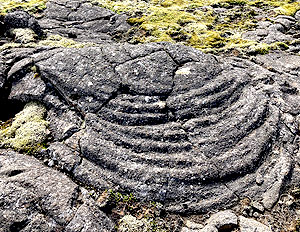
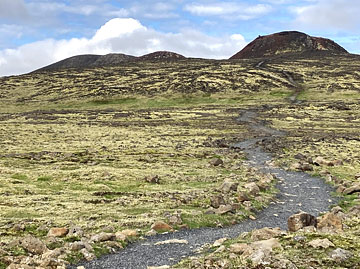
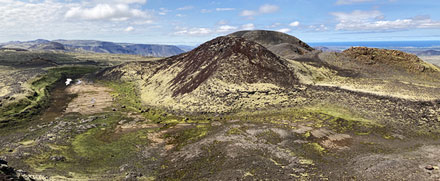
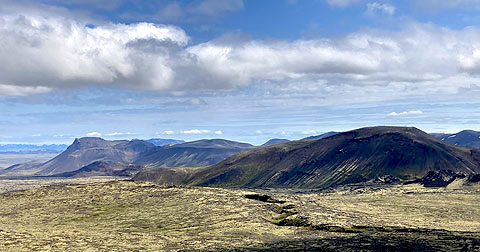
Thrihnukagigur Volcano has three cones and we were to descend one of these. It last erupted around 4,500 years ago and there is no indication that it will erupt again in the near future. Normally the vent closes after an eruption, plugged by cold magma, but for some reason this one had remained open. There hasn't been an eruption in this area for thousands of years.
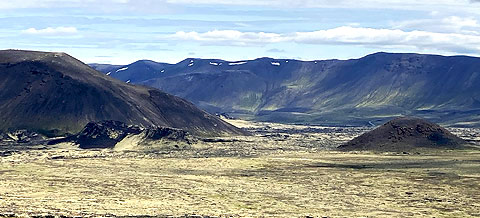
The views from the top of Thrihnukagigur are impressive. We'd been blessed with a very warm, clear day and could see all the way to Reykjavik and out to sea.

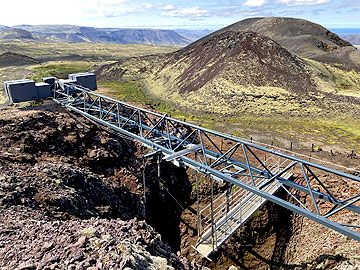
At "base camp" (where they served a very good traditional Icelandic meat soup when we came back out of the volcano) just below the volcanic cone we were kitted out with harnesses and helmets and then taken to the lip of the cone where six of us boarded a cradle with a guide who clipped us in. The cradle is very similar to the window cleaner cradles used for skyscrapers.
Then began a long slow descent, 120m down into the volcano.
At the top it is very narrow and the cradle very nearly touches the sides at some points. But then it widens out into the vast main chamber.
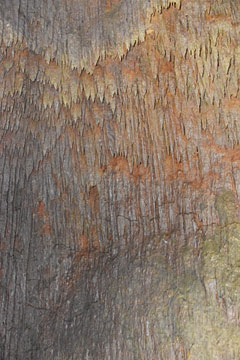
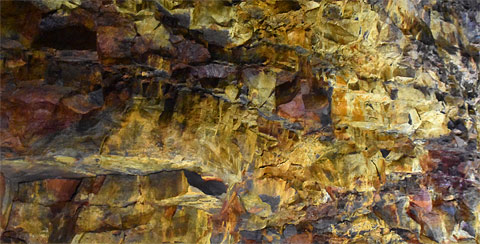
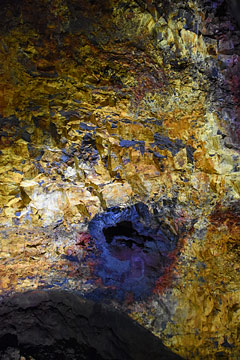
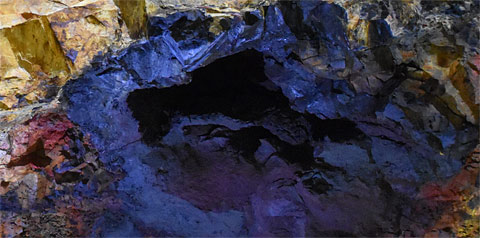
At the bottom we were unclipped from the cradle and made our way into the chamber. It's very dark in places but there are a few lights.
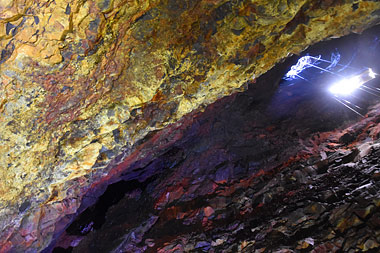
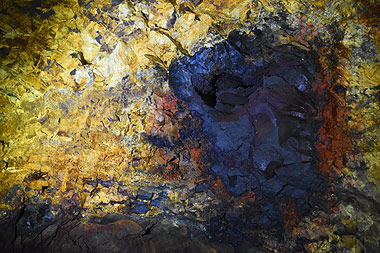
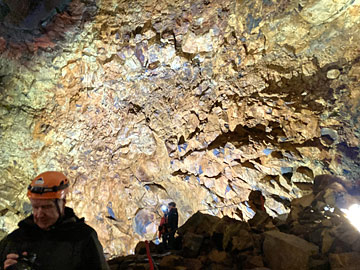
A rope is fixed around the edge to provide some kind of security against falling as the going is steep in places, and very rough ground with loose, and sometimes wet, lava rocks underfoot. But it is an absolutely fantastic experience.
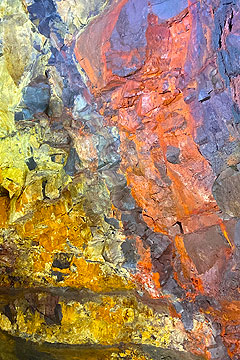
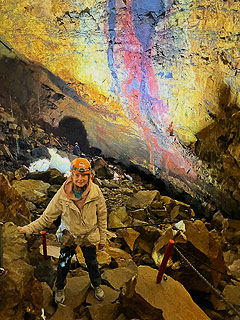
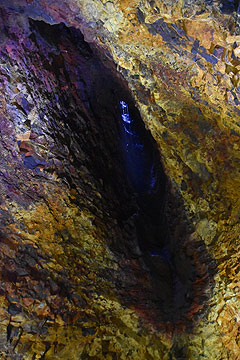
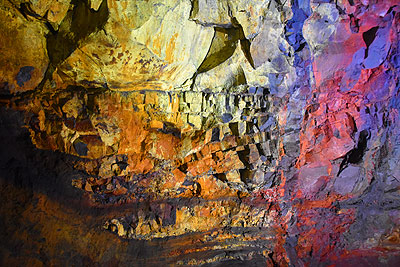
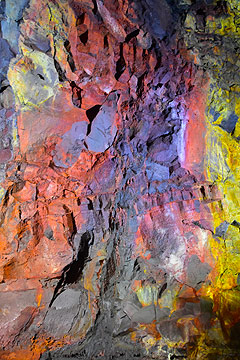
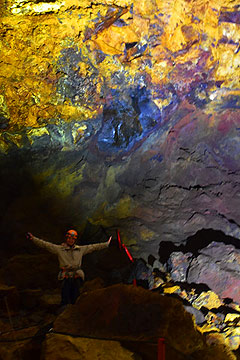
The walls have huge coloured patches from various minerals - sulphurous yellows, iron-based reds and purples.
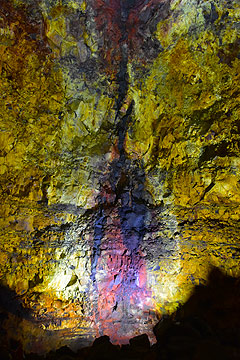
We spent around 45 minutes inside the volcano clambering around the rocks and trying to get decent photographs but it's quite difficult and these don't really do it justice, not only in the brightness and depth of the colours but also in the amazing experience that it is.
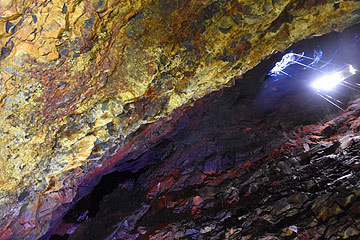 e
e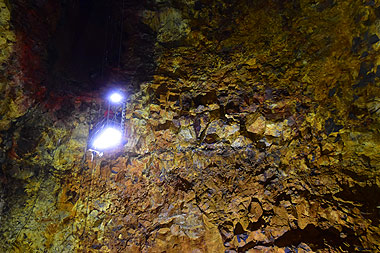
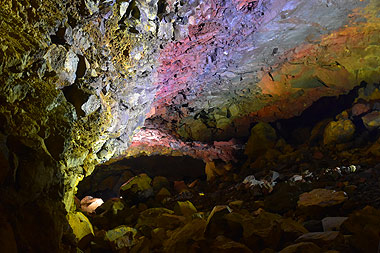
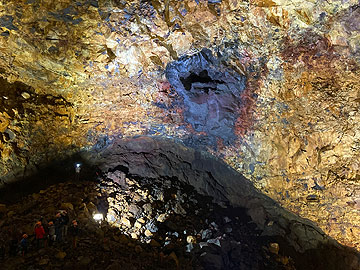
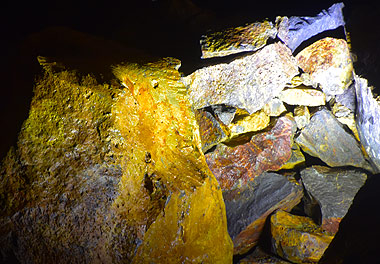
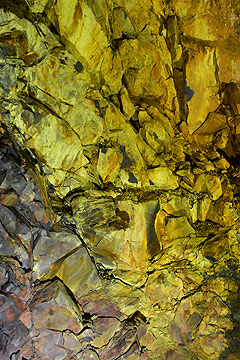
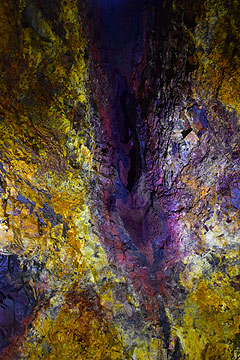
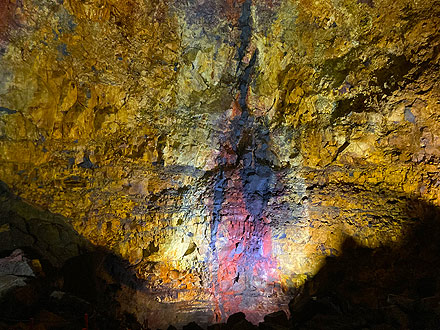
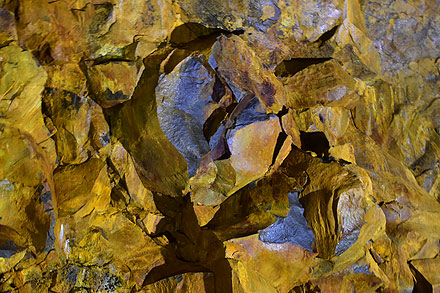
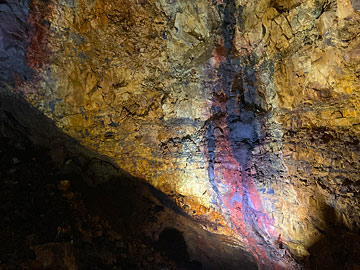
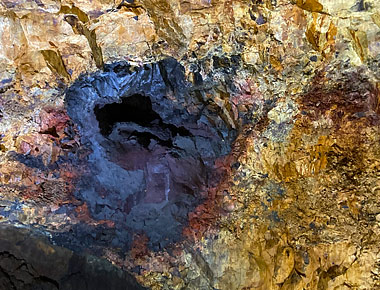
Simply spectacular.